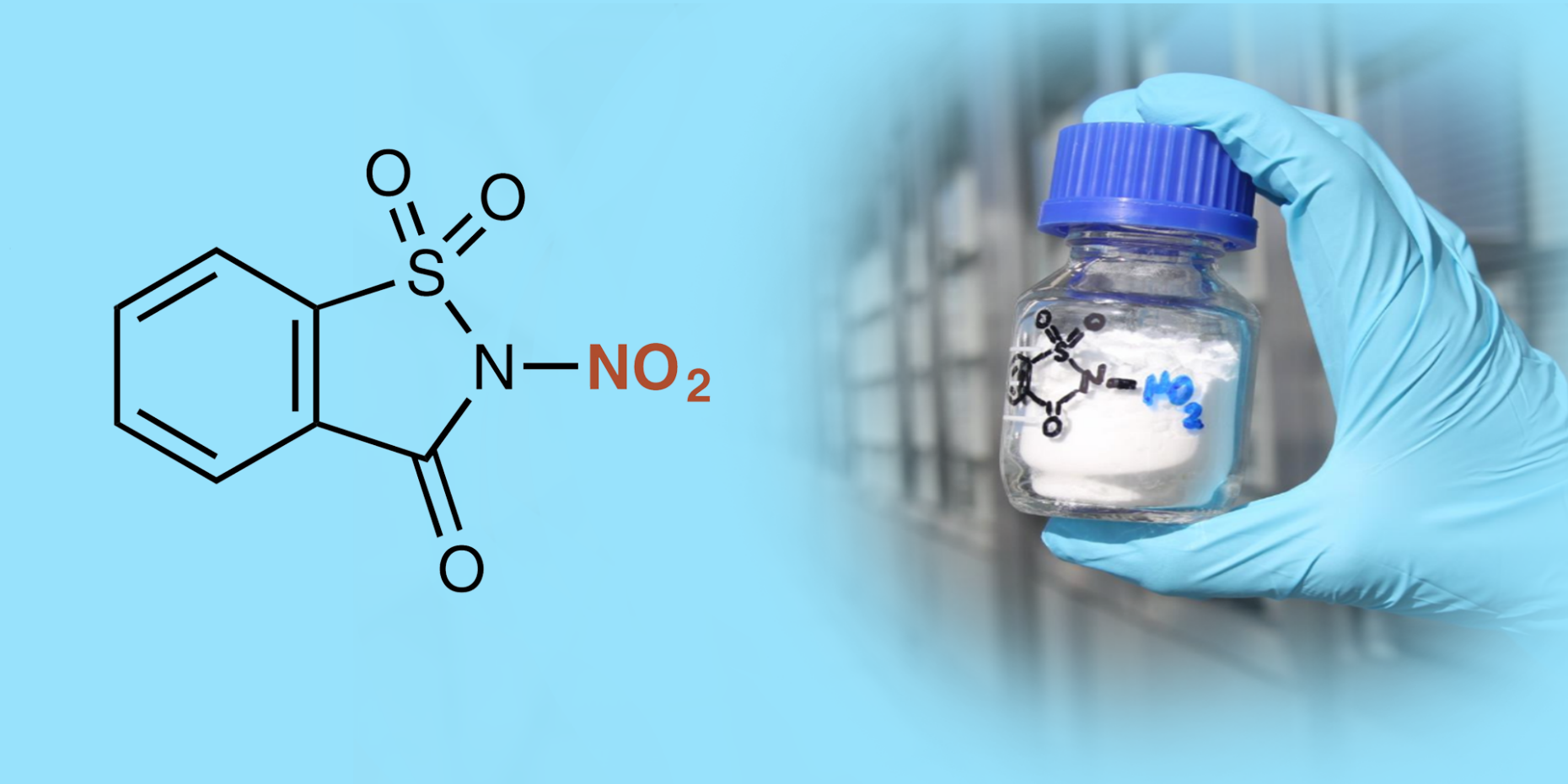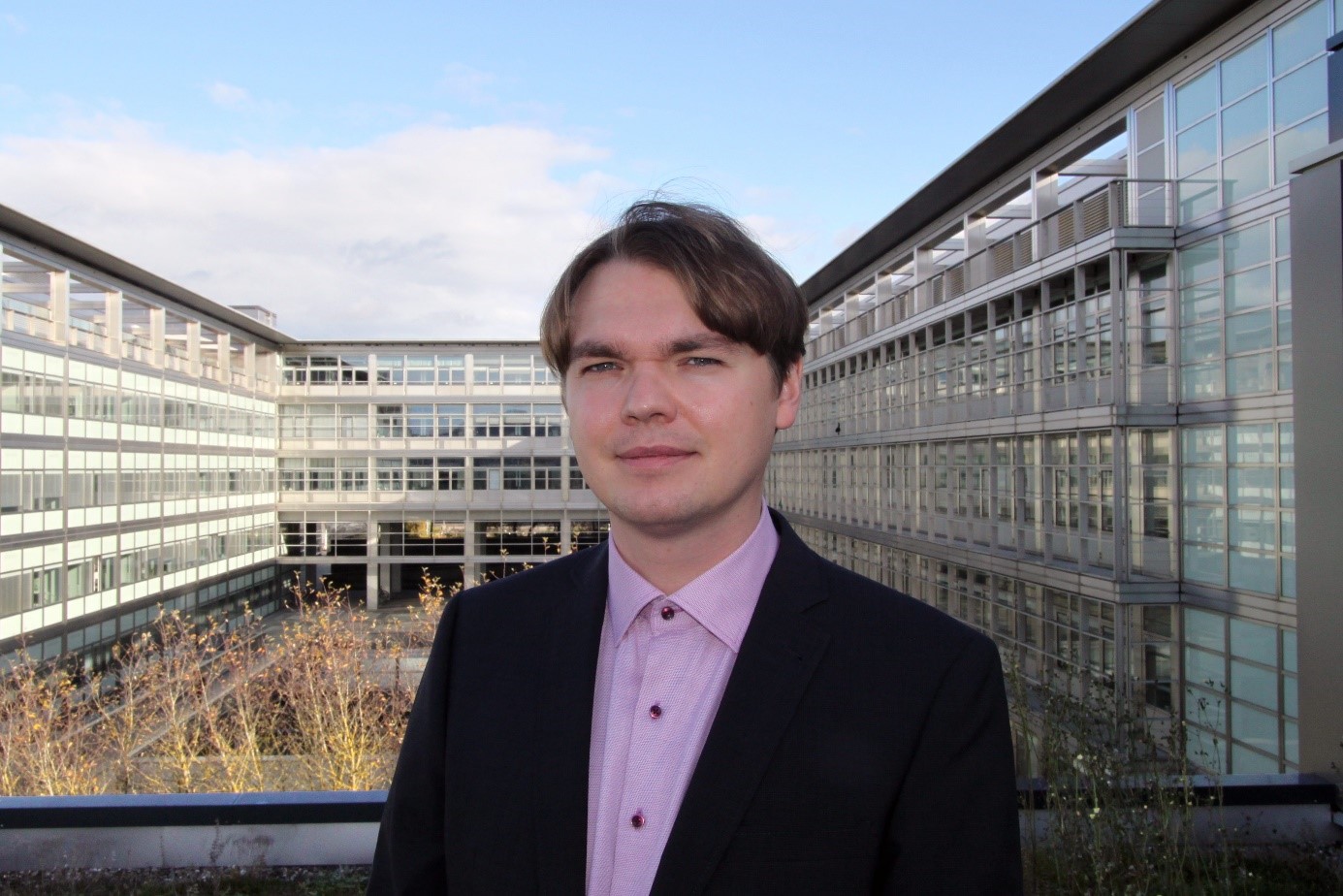A new tool for nitro-chemistry
”Chemistry is when it stinks and explodes.“ – That is what a lot of people associate with chemistry. Indeed, there is a risk in handling certain chemicals – like some nitro-compounds. Dmitry Katayev and his colleagues invented a reagent, which makes nitration reactions of various organic molecules safe, easy and accessible for every lab.

Why is the nitro-group important in chemistry?
The chemical properties of the nitro-group have broad applications. Most people know it for its explosive power in TNT (2,4,6-trinitrotoluene). But what is more important is its application in medicinal chemistry. For example, the presence of a nitro-group in a drug molecule can induce desired biological changes such as an increased effectivity of the drug. The nitro-group is also used as a precursor for many organic molecules, which are difficult to synthesize in any other way.
What is the trouble with nitro-chemistry?
There are multiple challenges with synthesizing nitro-compounds. Typically, concentrated nitric acid is one of the required starting materials. Nasty stuff. It is very likely that the nitric acid destroys your target molecule due to harsh reaction conditions and will lead to the formation of various undesirable compounds. Moreover, unwelcome chemical waste is produced in this process.
Can you offer an alternative?
In our group we invented a reagent based on the structure of saccharine (see figure), which introduces the nitro-group under very mild conditions to a target molecule. The reagent itself is cheap, bench-stable, safe and easy to handle. We have already used it to nitrate steroids, vanillin and ibuprofen – just to name a few. The yields were excellent.

What is the range of application of your reagent?
Our reagent can transfer the nitro-group to benzene-like molecules, which are very common in medicinal chemistry. The most striking aspect, however, is the versatility of our reagent. In a multistep synthesis, a chemist has to plan carefully in which order to apply each reagent, as there could be undesired side effects. For example, if we have to use concentrated nitric acid for the transfer of the nitro-group, we will use it as early as possible. In this way, we deal with a simpler version of the target molecule with less risk of undesired by-products. With our reagent, however, we are free to transfer the nitro-group at a much later stage to the target molecule, because the reaction conditions are mild and the formation of undesired by-products is not to be expected. This late-stage functionalization of a target molecule is an important tool for chemists.
What comes next?
It was a great opportunity for me working at ETH Zurich and being surrounded by enthusiastic and passionate people. The next step in my career is to join the Chemistry Department of the University of Fribourg (CH) as an SNSF Assistant Professor in January of 2021. One part of our research will focus on developments in the field of nitration chemistry. It would be particularly interesting to refine the synthesis of the reagent focusing on both, environmentally benign conditions and upscaling to industrial production volumes. In this context, I would be happy to get in touch with collaboration partners from industry to tackle this task together.

Contact / Links:
Publications
Patent pending
Calvo R., Zhang K., Passera A., Katayev D., “Facile access to nitroarenes and nitroheteroarenes using N-nitrosaccharin”, Nature Commun. 2019, 10, 3410. external page https://doi.org/10.1038/s41467-019-11419-y
Zhang K., Budinská A., Passera A., Katayev D., “N-Nitroheterocycles: Bench-Stable Organic Reagents for Catalytic Ipso-Nitration of Aryl- and Heteroarylboronic Acids” Org. Lett. 2020, 22, 2714-2719. external page https://doi.org/10.1021/acs.orglett.0c00671
Do you want to get more "News for Industry" stories?
external page Subscribe to our newsletter
external page Follow us on LinkedIn
Are you looking for research partners at ETH Zurich?
Contact ETH Industry Relations